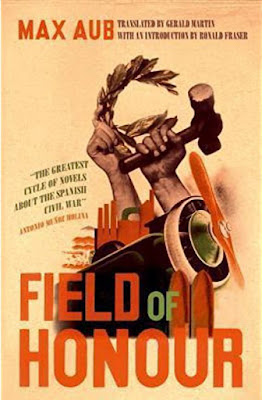4321
I have 13 Paul Auster novels on my bookshelves (14 if you include The Red Notebook) and each one of them has been duly read and loved – with degrees of love, admittedly, but always love. I bought 4321 when it was released but baulked at it until December 2018. When you read the first of its 866 pages, you can understand that a commitment of time is needed. Not only that, but because the story is really 3 alternatives to 1 story (or 4 closely related, alternate stories) there is no use reading a few pages each day because you will just get lost. In the end, with other duties to attend to, I started in the holiday period and set myself the goal of getting through 50-60 pages a day, and that is an approach I can recommend for this weighty tome.
Before starting the novel, I had understood the narrative
strategy of providing the reader with different pathways for the main
character, Archie Ferguson. However, it took me a few chapters to work out what
was going on. Chapter “1.0” acts as a general prologue, with an ‘family legend’
of Ferguson’s grandfather arriving in New York as an immigrant from Minsk, and
being awarded the name ‘Ferguson’ when his Yiddish (Ikh hob fargessen – I’ve forgotten!) is misunderstood by a custom’s
official. Ferguson’s father Stanley – 3 Brothers Home World owner – and his
mother, Rose, photographer, enter the picture and Ferguson, their first and
only offspring, comes into the world. Chapter 1.1 begins with the child
thinking he will one day marry his mother and ends with one of Stanley’s
brothers robbing the store. Chapter 1.2 opens with a story of Ferguson’s
near-death with a fever at age 6, and ends with the store burning in a fire,
but insured. Chapter 1.3 starts with the death of a cousin in Korea, and ends
with the tragedy of Stanley dying in the fire. In Chapter 1.4 the business is
doing well and the family move from Newark to Maplewood, and ends with Ferguson
being separated from his best friend in the fallout of divorce. You can get the
general idea from this summary: each version of Ferguson’s life is a little
different, even though the ingredients of his life have much in common – an every
life in the 1960s – as family, education, politics, sport and world events
circle around the growing boy.
For a big book, and from the opening chapter, you might
expect Auster had taken on a family saga, generational in intent and sprawling
out over the years. This is a saga of a different sort. The novel centres on
those terrible teenage years when a person is discovering who they are – their talents
and their limitations; their sexuality and their values and the timescale is
thus quite limited. Auster attacks adolescence unflinchingly, including many
moments which an individual would much rather bury in their murky past – love affairs,
sexual encounters, selfish acts and blind-spots. The setting is largely New
York, but Paris is a second city, with an extended stay for one of the Archie’s.
All are interested in sport and in writing – we have an aspiring journalist, a
poet, and a fiction writer; a basketballer, baseball player and sportswriter.
And around and beyond all that, we have Paul Auster the metafictional writer
whose narrative reminds the reader of the writer by simple virtue of its
restarts and re-versions, with occasional thematic riffs (such as this one):
‘Everyone had
always told Ferguson that life resembled a book, a story that began on page 1 and
pushed forward until the hero died on page 204 or 926, but now the future he
imagined for himself was changing, his understanding of time was changing as
well. Time moved forward and backward, he realised, and because the stories in
books could only move forward, the book metaphor made no sense’ (346).
Ferguson 4 writes extended
stories, like ‘Mulligan’s Travels’ in a manner which is reminiscent of Auster’s
novellas at the start of his career, collated in The New York Trilogy. Another Ferguson 4 narrative ‘The Scarlet
Notebook’ also sounds very Auster: ‘a book about a book, a book that could read
and also write … a story would begin to develop inside it that would thrust the
fictitious author, F., into a confrontation with the darkest elements of
himself’ (725). Finally Auster brings all this together, circling back to the
story of his grandfather’s arrival in America, with Ferguson’s next book
sounding very much like 4321: ‘Not one person with three names, he said to
himself that afternoon … [but] he would invent three other versions of himself
and their stories along with his own story (more or less his own story, since
he too would become a fictionalised version of himself), and write a book about
four identical but different people with the same name: Ferguson' (862).
4321 is a Magnum Opus for Auster
4, the 14th Auster to enter my bookshelf, a book that has so
unsettled me that I have started to imagine Gates 1.0, 2.0, 3.0 and 4.0 – re-reading
old diaries and seeing the forking paths and where they may have taken me
before I ended up here, in my study, always destined (I imagine) to read and
write a few thoughts about Auster’s 4321.
The study, my family, this computer – all may have been different – but the
866 page book in my hands was always going to be the same. I'm just the last man standing.
(See also The Book of Illusions, Oracle Night, Timbuktu).




Comments
Post a Comment